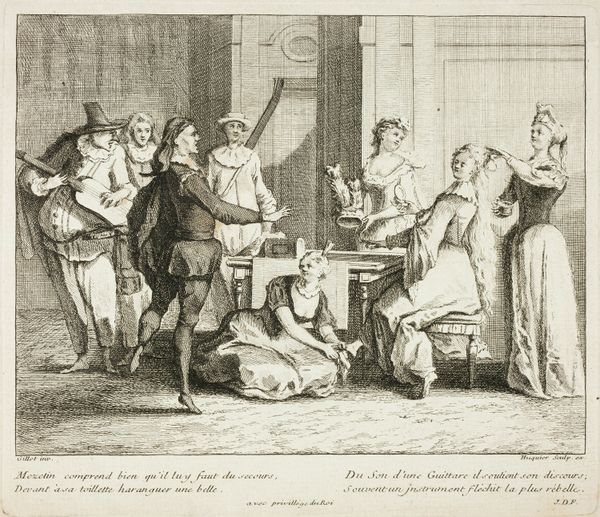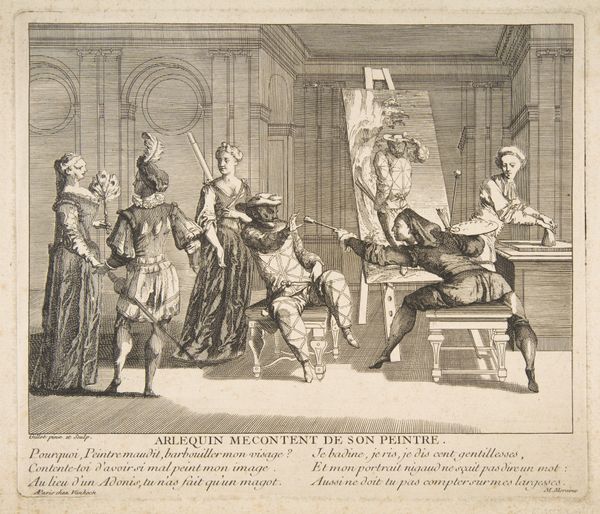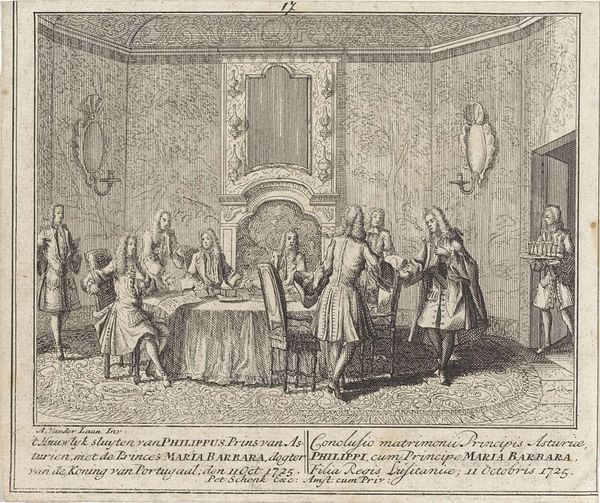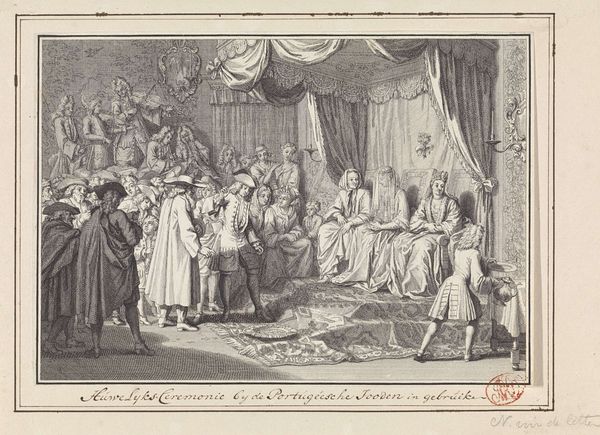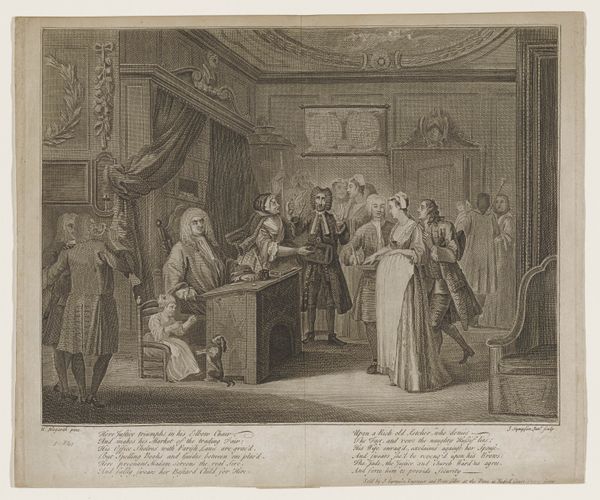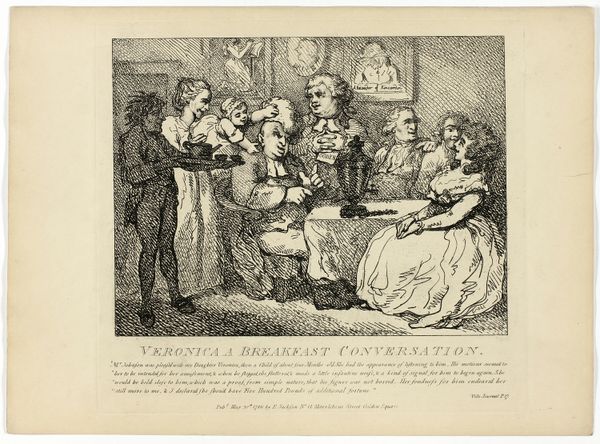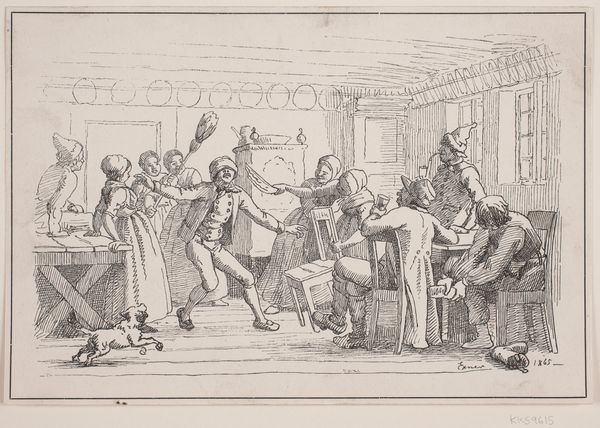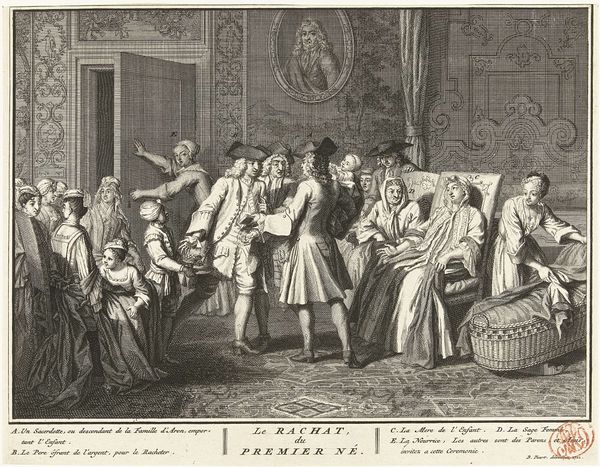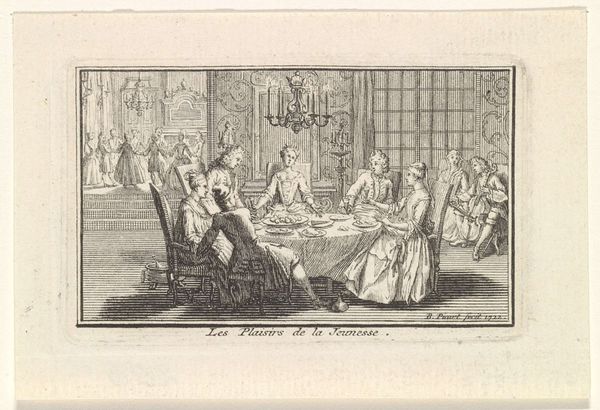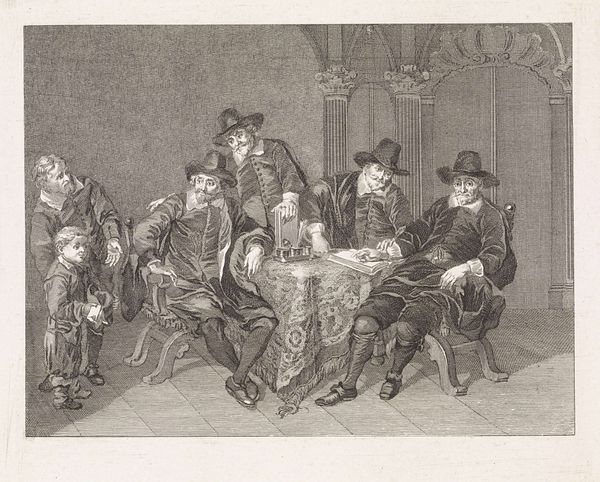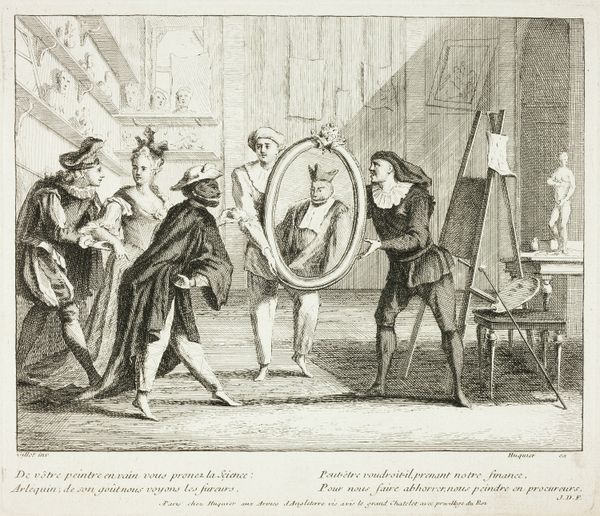
drawing, print, etching, paper
#
drawing
#
baroque
# print
#
etching
#
caricature
#
paper
#
genre-painting
Dimensions: 165 × 217 mm (image); 190 × 225 mm (plate); 235 × 315 mm (sheet)
Copyright: Public Domain
Curator: This etching by Gabriel Huquier, dating from 1729 to 1732, is entitled "Plate from Livre de Scènes Comiques." It resides here at the Art Institute of Chicago. Editor: It has a kind of frenetic, staged feeling. Like a play caught mid-scene, but a really biting one. There’s something deeply satirical about it. Curator: Huquier certainly knew how to capture theatrical flair! As a print, it could have been easily distributed, carrying its messages far and wide. Notice how he employs line—the quick, agitated strokes contribute to a sense of unease. The artist has effectively made a grotesque parody using archetypal imagery and stock characters. Editor: And there's an engagement with race and class happening. The central figure, seemingly an educator, wears what looks like blackface—but it could just as easily be a theatrical mask for some minstrel type of burlesque, if not outright colonial propaganda. How do we interpret that today? Who exactly is the butt of the joke? Curator: Contextually, this print originates in the Baroque period, where elaborate performance and caricature were frequently used to satirize the elite, often by way of "low" subjects and types. So while the imagery feels loaded now, it's important to consider its initial audience and purpose. The artist likely drew on familiar Commedia dell'Arte tropes, inviting a laugh at someone else's expense. But whose? And why? I wonder, how much do the symbols of transgression and humor carry different valences when taken out of their historical moment and displayed in a modern context? Editor: Precisely! This image holds up a mirror, perhaps not to its intended subject, but to ourselves—forcing us to reckon with the problematic undercurrents of the past. That performative transgression you mention relies on reinforcing systems of marginalization. Curator: Well, precisely. That's the power of images; they change meaning as much as time changes perspectives. Editor: Indeed, and it compels us to keep asking hard questions. About then, and now.
Comments
No comments
Be the first to comment and join the conversation on the ultimate creative platform.
